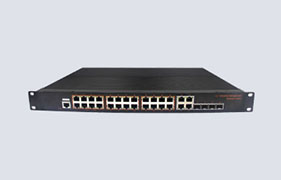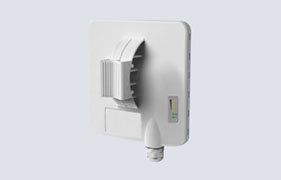Advantages of using industrial switches in industrial areas
As we all know, there are commercial grade and industrial grade switches. Commercial switches are generally used in homes, small businesses and other places, while industrial switches are often used in industrial environments. So why can't commercial switches be used in industrial environments? Why must industrial network switches be used in industrial sites? Next, let's take a look at the small edition of Feichang technology!
First of all, the data exchange function of industrial switches is basically the same as that of commercial switches, but in terms of design and component selection, the strength and applicability of industrial switch products can better meet the needs of industrial sites. Industrial switches are also more flexible than commercial switches in terms of module expansion: there are a variety of optical and electrical ports to choose from. In material selection, product strength, applicability and real-time, operability, reliability, anti-interference and basic security can meet the needs of industrial sites.
I. Advantages of industrial switches used in industrial sites:
1. Bad industrial site environment
Because Ethernet was not designed to be used as an industrial network. When it is used in industrial field, it will inevitably reduce its reliability in the face of bad working conditions and serious interline interference. In the production environment, the industrial network must have good reliability, recyclability and maintainability. That is, when any component of the network system fails, it does not cause the application, the operating system, or even the network system to crash and break down.
When designing industrial Ethernet switches, considering the complexity of industrial sites, it can better adapt to industrial environment and play the role of industrial switches.

The environment of the industrial site is worse than the ordinary environment, at least in terms of vibration, moisture, temperature and so on. The ordinary switch is not designed to resist various conditions in the industrial environment. The ordinary switch cannot work in such a harsh environment for a long time, which is often prone to failure and increases the maintenance cost. Generally, it is not recommended to use commercial switches in industrial environments. In order to make switches used in such harsh environments, it is necessary to produce switches that can adapt to such environments. The reliability of industrial switches includes power failure, port interruption, relay output alarm, redundant dual DC power input, active circuit protection, overvoltage and undervoltage automatic break protection, and the reliability of industrial switches includes power supply failure, port interruption, relay output alarm, redundant dual DC power input, active circuit protection, automatic break protection, overvoltage and undervoltage. (Reliability depends on the model)
The functional difference mainly refers to the industrial switch is closer to industrial network communication in function, such as connection with various fieldbuses, equipment redundancy and real-time devices; The performance difference is mainly reflected in the difference of adapting to the external environment parameters. In addition to coal mines, ships and other particularly harsh environment, there are many industrial environment EMI(electromagnetic compatibility, dust protection and other environments have special requirements. Among them, the temperature has the most extensive influence on industrial network equipment.
2. The Ethernet network is overloaded
Because the Ethernet MAC layer protocol is C ** A/CD, this protocol makes network conflicts more obvious, especially when the network is overloaded. For an industrial network, if there are many conflicts, the data must be re-sent, which greatly increases the uncertainty of network communication. In industrial control networks, such uncertainty from one to the other will inevitably degrade the system control performance.
3. Strict real-time performance of industrial data
In industrial control systems, real-time can be defined as the measurability of the system's response time to events. After an event occurs, the system must react within a foreseeable time range. However, the industry has very strict requirements on the real-time performance of data transmission, and usually the data update is completed within dozens of ms. The Ethernet also supports the C ** A/CD mechanism. If a conflict occurs, data must be re-sent for a maximum of 16 attempts. Clearly, this mechanism for conflict resolution comes at a cost of time. Once the line falls off, even for a few seconds, it may cause the entire production to stop, and even equipment and personal safety accidents.


